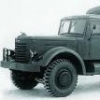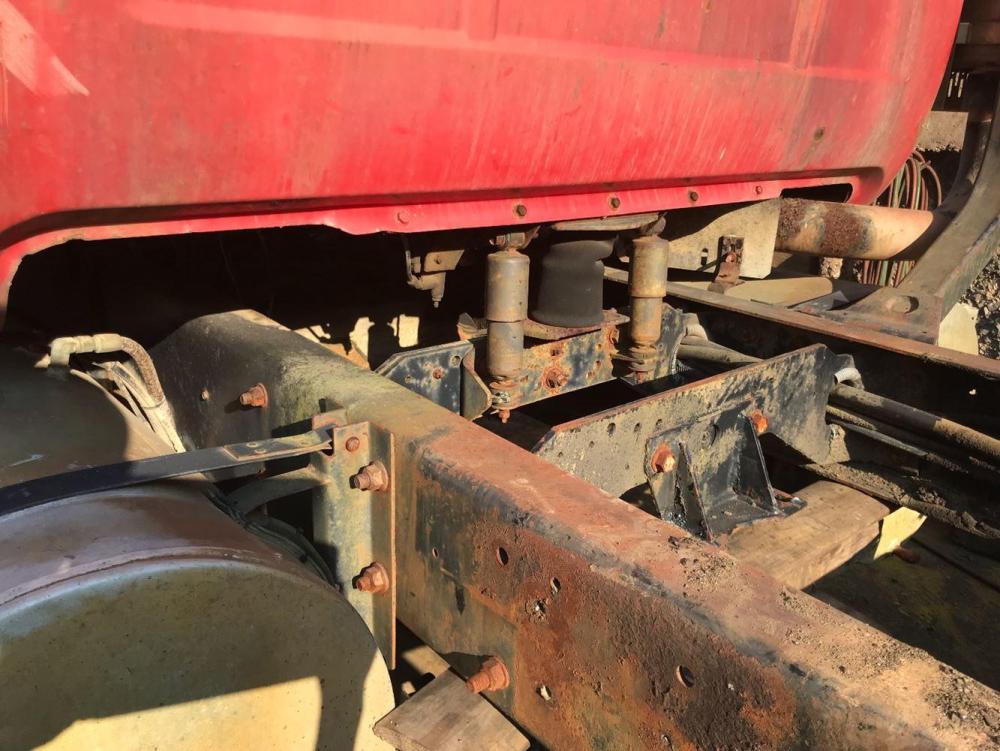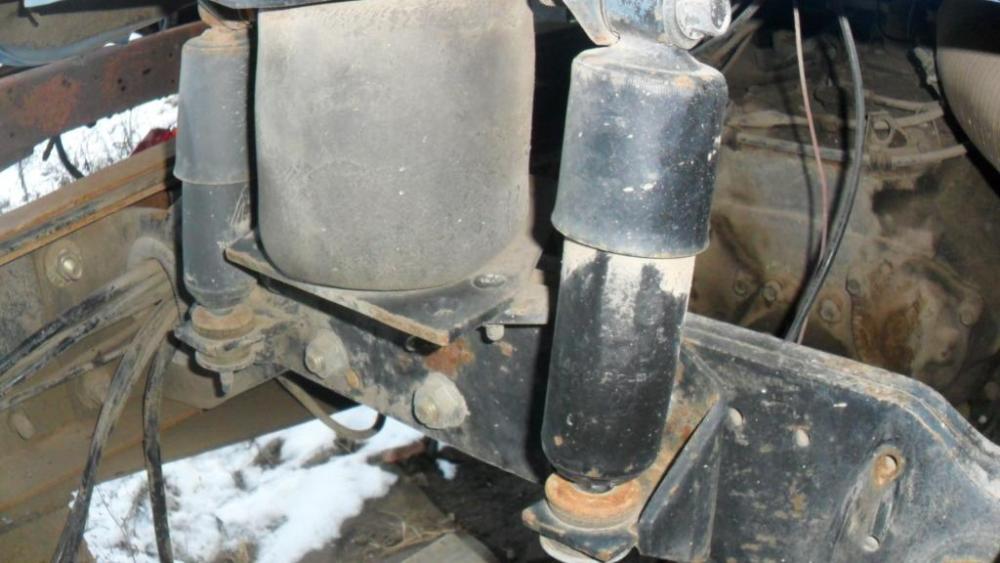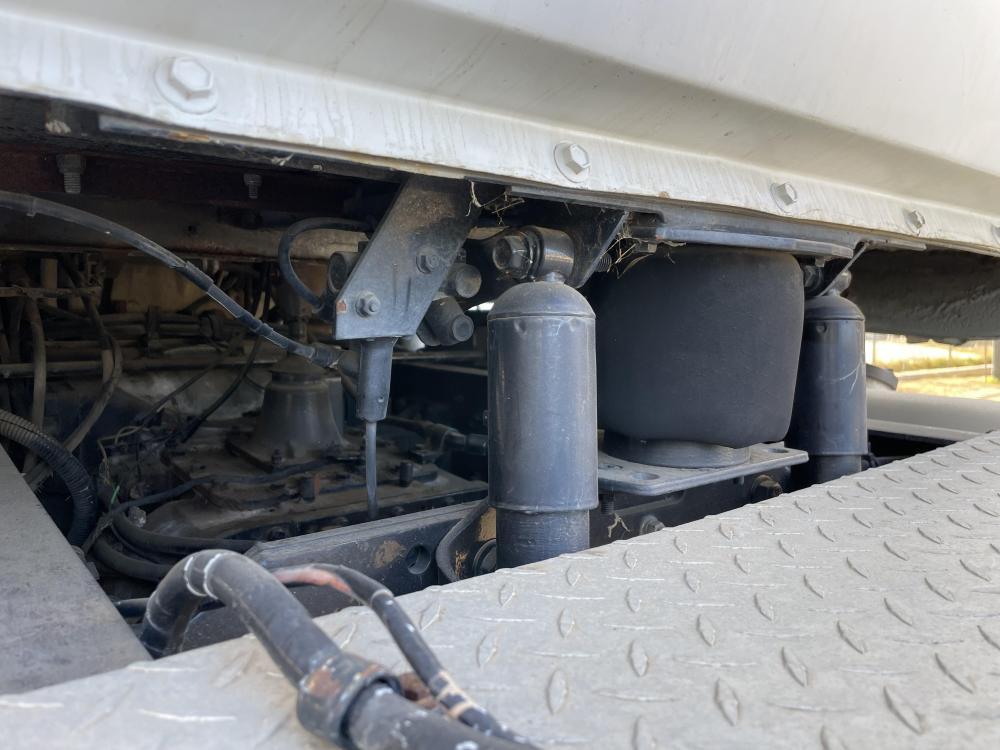-
Posts
7,973 -
Joined
-
Last visited
-
Days Won
78
Content Type
Profiles
Forums
Gallery
Events
Blogs
BMT Wiki
Collections
Store
Everything posted by Vladislav
-
Interesting configuration as it is. I don't remember seeing many (any-?) RB dump trucks. Thanks for sharing.
-
Right machine work presumes sharpness and accuracy with tolerances. Your bad experience with that speedy sleeve is the most prbably due to its imperfect fit. Which could be predicted by its very imperfect shape and even the design. A thin wall tube pressed over unevenly worn surface doesn't seem supplying perfect surface for a seal to seat against and work well. I honestly am surprized at all this technology is count as "good" and so widely used. And at the same time I heard from multiple guys that they use such a sleeve and got leak back again soon. As less excentricity of the spinning surface is as less deformation of the seal's rubber is required to keep tightness. It's more actual for higher revs applications though so doesn't seem the matter of your issue. Possibly there was leak just between the sleeve and the shaft if you didn't apply sealer or epoxy in between. Or the sleeve's shape was so imperfect so the seal couldn't do its job at all. Or got worn or cut by a certain sharp edge. Maybe it's worth for you to just spend a couple of hours in the evening to read on the web basic principles of fabrication of shafts. Engeneering is way not always a rocket since. Most basic points are easy enough to figure just by common logic.
-
Fixing the shaft condition could be the way to go. Lathe work is Ok if you dial the shaft's center well enough before cutting. Grinding in a machine is much better and preferrable option. Welding is no of good options since the shaft is (should be/ could be) made of high carbone steel. Which doesn't weld well and could easily crack through in the welded area later in service. So application of material (metal) on the area could be halvanic (chrome) or ultrasonic metal powder coating. I don't know which kind of technology could be found in your neck of the woods but strongly advise to get off of the idea to weld up. Also an option might be cutting/grinding the shaft over the worn area to lesser OD. Than locate a seal with lesser ID (and the same mounting size) using a chart or catalog. For example Timken offers a wide range of industrial seals and their catalog is on-line. Not almost correct way of fixing things but could be applied.
-

DM Cab Replacement
Vladislav replied to DaveM's topic in Antique and Classic Mack Trucks General Discussion
The mounts of both cabs are expected to be the same. There are some additional parts welded (or bolted?) to the cowl at the engine side to suit the steel nose shells and fenders. By other aspects cab must be similar. -

Cruiseliner Transformation
Vladislav replied to cruiseliner64's topic in Antique and Classic Mack Trucks General Discussion
Yup, looks nice and attractive. And nothing of the look it had when came into the shop. A question - what did you use to clean the lower side of the cab? I see bare aluminium the most (or light paint?) And my Cruiseliner is well covered with dry mud all over the under side of the cab. -
Happy Birthday Doubleclutchingweasel !
-
Merry Christmas BMT!
-
By very simple reason my "bet" the engine is E6-350 Econodyne. I have one in a 1988 R-model with similar injection pump. The "bet" is due to the 9-speed transmission used. Mine has the same. You don't need 9 speeds behind a Maxidine since its torque curve works well with just 5 speeds. I have another R-model also 1988 made which has T2070 7-speed transmission. Its ratios are similar to T2050 5-speed but have two "low holes". There's a similary rated T2060 6-speed and T2080 8-speed. All trio has first 5 gears spread much wider than "multispeeds" T2090, T2100, T2110, T2130 and T2118. Wider gear steps are aimed to serve with Maxidyne low torque curve engines. Ok, that my other R-model has its engine stamped as EM6-300L. Almost as Keith described regarding his DM. It's a bit easier to identify R or DM since E6-350 would be R/DM688 model and EM6-300 would be R/DM-690. That's what I have on the door tags. RW's are all 613 or 713 with Mack engines so no clue up.
-
Happy B-day D-Day!
-
Sounds strange. Those drums I had for 4" shoes had a track for 4" shoe exactly. There could be some exceptions sure but more looks like someone put incorrect drums in the past. The reason of using narrower shoes is to minimize the unsuspended mass of the axle. But lesser drum would split weight even notably. Same for possible savings of materials in the production.
-
The heads are interchengeable. The only point you have is a small tube between two heads connecting them (fuel drain?) and there's a plug with Allen head at the corresponding end of each head. So you might be needing to change the tube fitting with the plug if the particular head was mounted in the different position on engine previousely. No info on the peened seats from my side. Looks like a rocket technology of someone who provided a seat swap in a shop with hope to secure them better. Wouldn't make any help as it seems to me.
-

R Model Door Emblems
Vladislav replied to Mr. Buck's topic in Exterior, Cab, Accessories and Detailing
As Bob said above. And the same method M-A-C-K letters attached to the front of the hood. -

Superliner 1 headlight arrangement.
Vladislav replied to Outbehindthebarn's topic in Electrical, Electronics and Lighting
It seems better to have low beam in outside lights just by prcatical reasons. Lights are closer to the sides of a vehicle to play a marker role and light pattern on the road is wider. -

Cruiseliner Transformation
Vladislav replied to cruiseliner64's topic in Antique and Classic Mack Trucks General Discussion
That's what I needed for. And Google said "sh*t" as the straight answer. But deeper investigation brang more. Oh, better to get back to the Cruiseliner deal. -
Hi Ken, Just a point. Swap of a bumper and visor are much less job than rearranging the rear axles. You could even put such big bright parts up for sale when still on a truck. Very good advertizement way when people see the look they'd get. The rig looks cool on the pic. Sure might be found in poorer condition when up close. Speaking convertion 613 to 612 I'd consider airride for that. Keeping the FR in place cutting off the RR with the rear frame portion. FR diff would need attention though since there's a power divider in it. Would need RR carrier to be swapped into.
-
-
Yes, we are all busy minding our own businesses. Happy B-lated B-day Paul!
-

Cruiseliner Transformation
Vladislav replied to cruiseliner64's topic in Antique and Classic Mack Trucks General Discussion
Uggh! Italians have stolen a Mack color! What a shhhame! -
Yes, this crossmember is supposed to be on the rear. I have a similar one on the rear of my MH. With spicers at the sides and put with the dish up. Very probably you have a similar part as the cab support but I expect that to be a single beam. If that one is double like the one in the pics I'd like to see your cab air ride setup. Good luck on the fix and future plans!
-
Sure it does qualify! Happy Birthday Linda!
-
This sounds right since R-model frame is a bit narrower than RW2/MH. I have the crossmembers off the R apart sandblasted and painted. So can check out the stampings if needed. Interesting point of using shorter crossmember with spicer plates on the single framed RW/MH. One of my MH's (I have them two) has the very rear beam arranged that way, with spicers at the ends. It's a single frame 1/4" chassis. But it's two stamped shells of the style the original discussion was about, welded together. Also remarkable point is the 2nd MH has the crossbembers off a R/DM. It's Camelback with single 1/4" rails. Sure those parts are wrong for the truck and the rear engine mounts are put on the chassis brackets using spicers to elevate them a bit (for an inch or so). Originally I was surprized seeing the engine lifted up that way but the owner couldn't say anything on that. And later I found the rear of the chassis became narrower than it should so the engine mounts couldn't fit right and somebody in the past arranged the spicers to clear up the edges of the frame rails they would interfere otherwise. Thank you for the part ##.
-

Cruiseliner Transformation
Vladislav replied to cruiseliner64's topic in Antique and Classic Mack Trucks General Discussion
She's getting looking sexy. That white area - is that plain white color? Or with addition of pearl? -
If you look at the #2 photo in the set of pics I posted you may find there was a back to back style using two crossmembers like yours. This way you could make a such one using your old part and that piece of DM. And that would be much stronger than just repair of your original part. But as far as I understand DM must be narrower. Also a berry from the same field - what is 9QL4551M? Is that exactly for Superliner? And for which frame? Single? Or triple?? I ask because those in my R-model are also 9QL-something. I don't keep the digits in my mind and haven't found them in the computer. But those would definitely be different from what you need by the width. At the same time looking almost identical on a picture.
BigMackTrucks.com
BigMackTrucks.com is a support forum for antique, classic and modern Mack Trucks! The forum is owned and maintained by Watt's Truck Center, Inc. an independent, full service Mack dealer. The forums are not affiliated with Mack Trucks, Inc.
Our Vendors and Advertisers
Thank you for your support!










